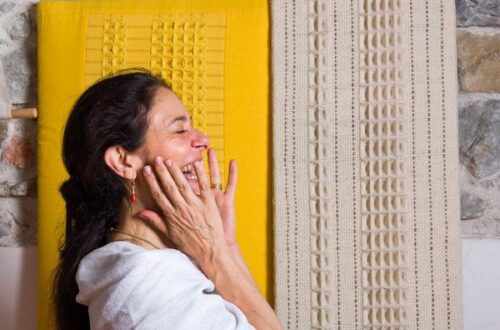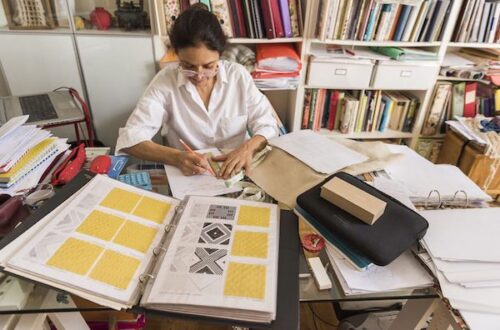Silence on the Alban Ridge
Featured in the May 2021 Issue of The Open Doors Review. View Current Issue Here.
Essay by: Scott & Trang Crider
On a cool, clear late-winter afternoon in Marino, we stepped up into the Cotral bus from Roma to Velletri and found seats, but rode only as far as Albano—one of the Castelli Romani, the small hill towns south of Rome—to explore the ridge of the crater lake, Lago Albano, at the acme between the lake and the city of Albano. We climbed the steep streets north from the city center up the crater’s side to find the ruins of the Roman amphitheater (almost at the top of the crater’s ridge) and explore the grounds of a Capuchin convent (at its very top). In both places, we were the only people there, and we weren’t sure we were allowed to be there. Travel encourages you to transgress.
The amphitheater was built for the second Parthian legion in the 3rd Century CE, but its seating is now worn down to mossy nub, and its floor, to grassy field. The Albans like to hold concerts here in the summer; that winter day, it was not open. We walked along the fence above the amphitheater that let us look down into its natured culture, but fretted that we could not enter. We continued to explore until we found an unlocked door only slightly ajar, shot a conspiratorial look at one another, and slipped in. Holding hands, we passed through its side entrance, and found ourselves looking up from its floor at the faded seating on one side. The other side is gone and must have nestled against the top of the crater. Trang looked for a good spot for a photograph while Scott mistakenly dreamed of Seneca and Plautus, Latin literature’s demi-Shakespeares, even though the entertainments here were of a more sordid character. They fed human beings to wild animals. The Colosseum in Rome marks one of its spots with a cross to remind visitors of the persecution of Christians, the history of violence there and the violence of history everywhere. There are no markers here. No people. No sound other than birdsong. We take in its quiet loveliness, not mindful of its faded traces of brutality, then keep going up the crater’s side.
The Convent, Il Convento dei Padri Cappucini, is Franciscan, and the structure and grounds are marked by St. Francis’ simplicity, his austere yet joyous attempt to live out the Sermon on the Mount. The Church itself was not open, but we wandered into an empty courtyard, again alone and again unsure of the rightness of our being there. We figured Francis wouldn’t mind.
We hear that the Church has a lovely painting of St. Bonaventure dreaming of St. Francis, but we did not see it that day, and we confess Bonaventure annoys us because his biography of Francis not only lifted so much from Thomas Celano’s earlier biography, which Bonaventure then tried to have suppressed, but also edited out of the record Francis’ pre-conversion courtly gallantry involving wine, woman and song, no doubt thinking that saints must always have been saintly. Francis and Clare knew the good life less fully understood before they gave it up for the good life more fully understood.
From the entrance to the courtyard, we could look down the crater to Albano, across the valley to the Tyrrhenean sea; from within the courtyard, we could look down upon Lago Albano, its mischievous surface grey in the late afternoon sun. That surface changes color continually during any day and throughout whatever season you are in, but its customary metamorphosis of color runs from mint green to aqua marine, from aqua marine to grey. Eduardo De Fonseca makes an extraordinary claim in his Castelli Romani: An Account of Certain Towns and Villages in Latium (in WC Cook’s translation):
The Capuchin church, dedicated to San Bonaventura and erected by princess Gonzaga in 1619, stands on the hill summit, overlooking the most extensive panorama to be enjoyed in the whole of the Castelli. From its pleasant elevation two totally distinct yet equally grand views are obtained, one over the lake, Monte Cavo and the adjoining localities, and the other over Albano, the plain, and the distant sea.
It’s true, and we could see across the lake Monte Cavo, the highest point of the Alban hills, once home to the Temple of Jupiter, now recognizable by its hideous cell towers.
Up above lake and mountain, above city, valley and sea, we yielded to the courtyard’s silence. We dwelt in what William Wordsworth calls in his Prelude a “spot of time”:
There are in our existence spots of time,
That with distinct pre-eminence retain
A renovating virtue, whence, depressed
By false opinion and contentious thought,
Or aught of heavier or more deadly weight,
In trivial occupations, and the round
Of ordinary intercourse, our minds
Are nourished and invisibly repaired;
A virtue, by which pleasure is enhanced,
That penetrates, enables us to mount,
When high, more high, and lifts us up when fallen.
This efficacious spirit chiefly lurks
Among those passages of life that give
Profoundest knowledge to what point, and how,
The mind is lord and master—outward sense
The obedient servant of her will. Such moments
Are scattered everywhere, taking their date
From our first childhood.
Time opened a vast space for us within a brief interval of only minutes, and in that courtyard spot of time, we surveyed the Alban world as though children seeing Eden. Even the birds were still. We said nothing, only smiling to one another, lifted up by the elevating virtue of the place between the lake and the sea, nourished and invisibly repaired.
Afraid we would be caught, we hurried from the grounds.
Authors bio: Transplants from California, Scott Crider teaches, and Trang Crider works in the library, at the University of Dallas, which has a campus for its Rome Program in Marino, Italy, where they resided from 2018-2020, exploring the Castelli Romani and writing about their adventures.


